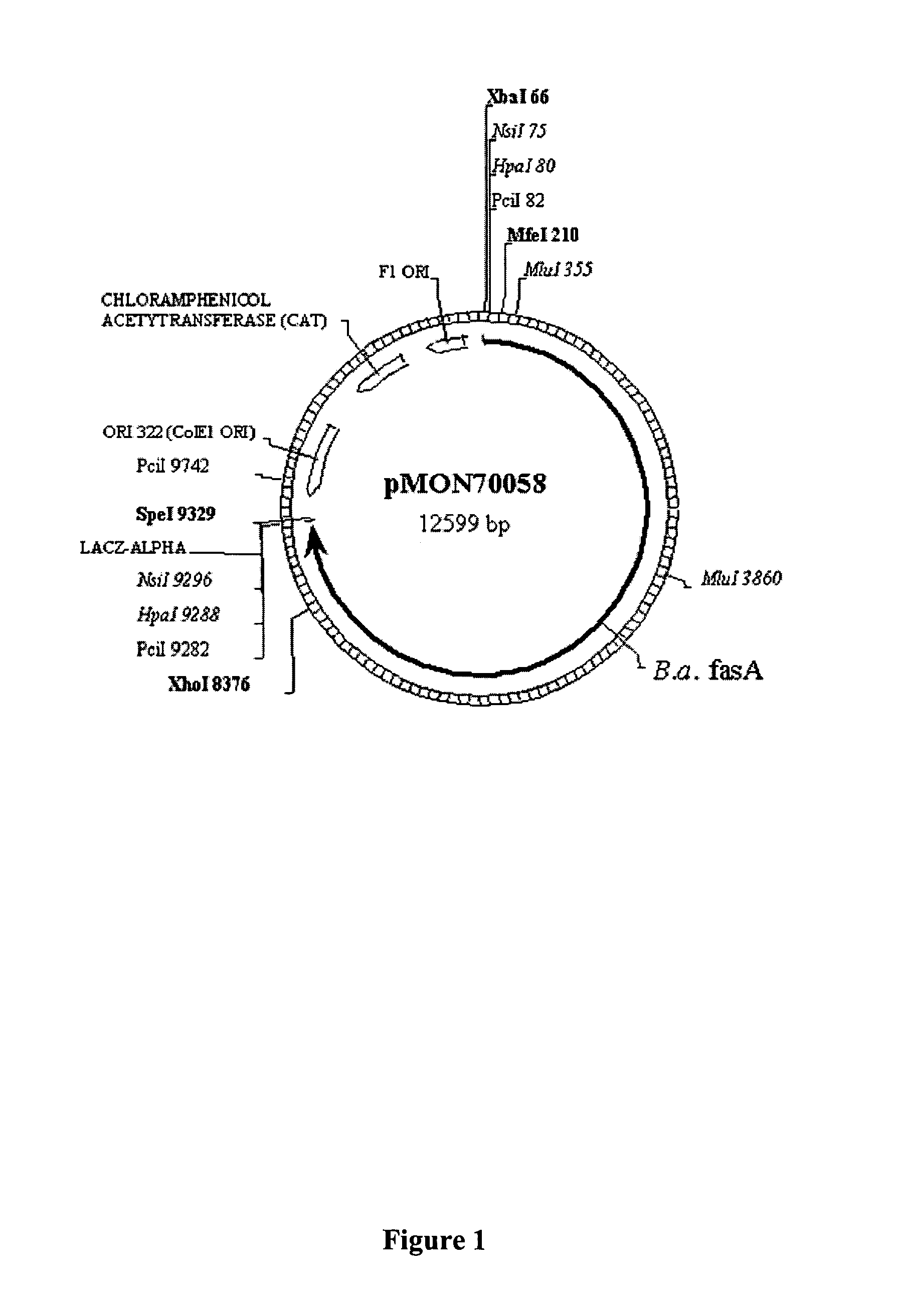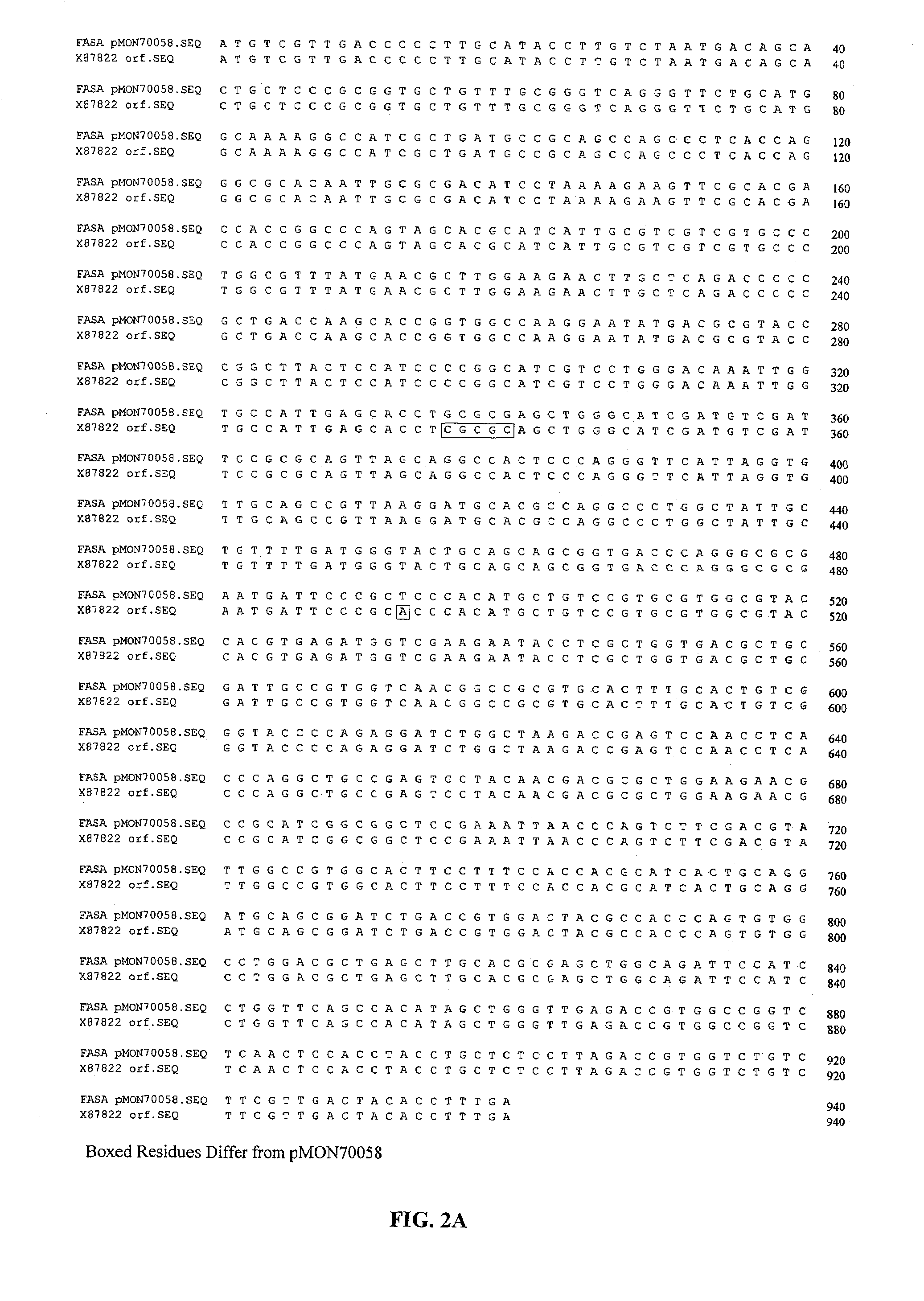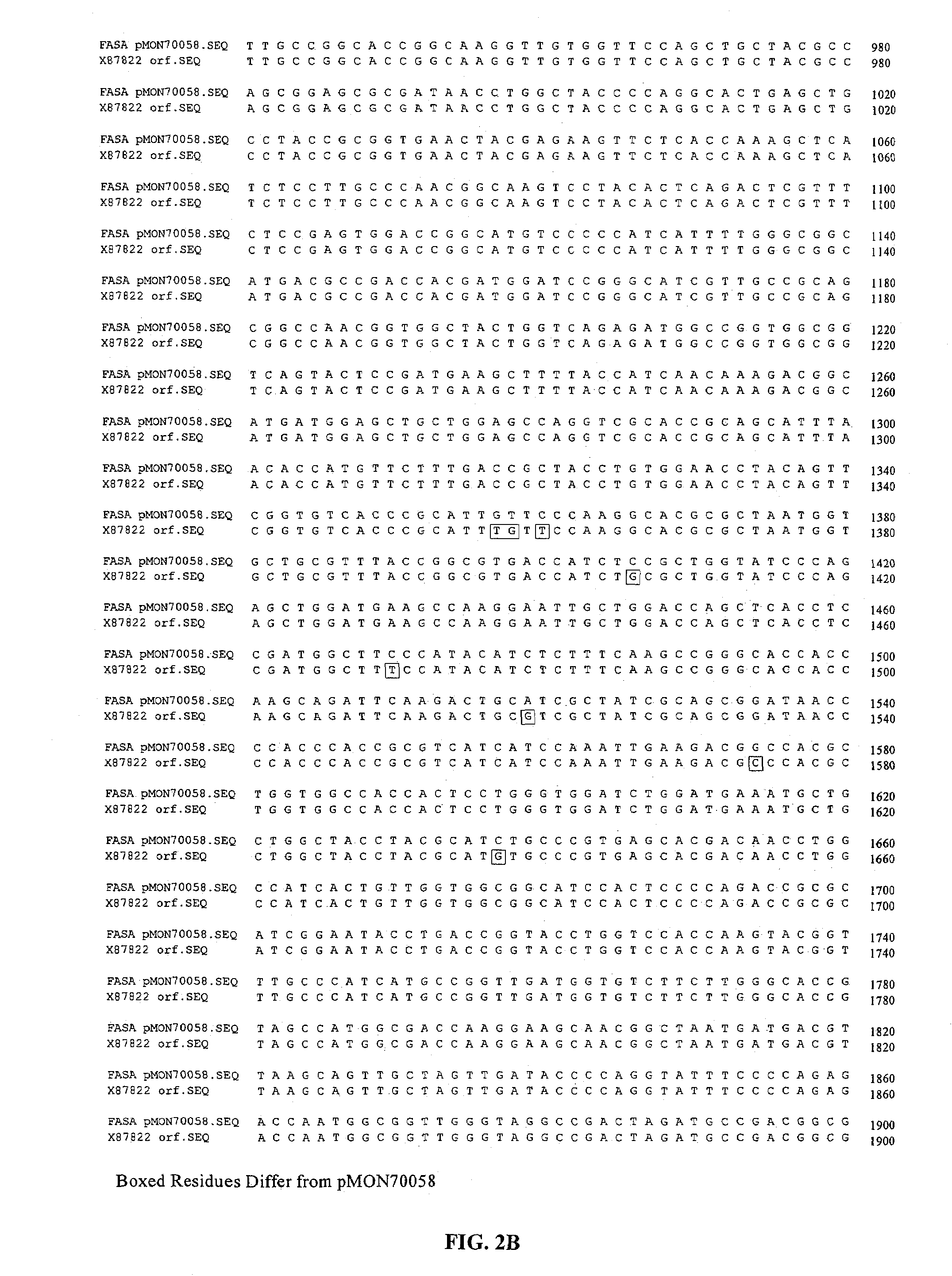Elevation of fatty acid synthase levels in plants
a technology of fatty acid synthase and plant, applied in the field of nucleic acid chemistry and agricultural biotechnology, can solve problems such as difficult to obtain nucleic acid sequences capable of producing increased fatty acid content in plants, and achieve the effect of increasing the oil content of corn plants
- Summary
- Abstract
- Description
- Claims
- Application Information
AI Technical Summary
Problems solved by technology
Method used
Image
Examples
example 1
[0195]This example describes the isolation of the fasA and ppt1 genes from Brevibacterium ammoniagenes.
[0196]Genomic DNA was isolated from B. ammoniagenes (ATCC 6871) using standard methodologies. A genomic library was prepared by partially digesting B. ammoniagenes genomic DNA with the restriction enzyme Sau3A, isolating DNA fragments ranging from 30-42 kb in size and generating the library using the SuperCos 1 Cosmid Vector kit from Stratagene, Inc. (La Jolla, Calif.). The genomic library was screened by hybridization and washing under stringent conditions with a 32P-labelled 1.1 kb fasA PCR fragment generated from isolated genomic DNA using the following PCR primers:[0197]14713 (forward):[0198]5′-CCAGCTCAACGATGAAGTAG-3′ [SEQ ID NO:5] and[0199]14714 (reverse):[0200]5′-TCGATGATCTGGTCTACTTC-3′ [SEQ ID NO:6]
[0201]
14713 (forward):5′-CCAGCTCAACGATGAAGTAG-3′[SEQ ID NO: 5]and14714 (reverse):5′-TCGATGATCTGGTCTACTTC-3′[SEQ ID NO: 6]
[0202]Rehybridization was in a solution of 40% formamide,...
example 2
[0214]This example describes the transformation of E. coli with the fasA gene constructs, described in Example 1, for functional testing.
[0215]The full-length, sequence-confirmed B. ammoniagenes ppt1 gene in the pCR-Blunt II TOPO vector described in Example 1 was cut out of the pCR-Blunt II TOPO backbone as a Sal I / Bgl II fragment, and ligated into the Sal I / BamHI sites, respectively, of pSU19 (Bartolome et al., Gene, 102(1):75-78, 1991). The Sal I sites of both the ppt1 and the pSU19 fragments were blunt-ended with the Klenow fragment of DNA polymerase I prior to ligation to enable inframe insertion of the ppt1 coding sequence into the lacZ coding sequence of pSU19. The PPT1 protein was thus expressed in E. coli as a lacZ fusion protein upon induction of the lacZ promoter in pSU19 by the use of isopropyl-1-thio-β-D-galactopyranoside (IPTG). This ppt1-containing vector was then transformed into E. coli strain VCS257 from Stratagene (cat#200256-51), along with the mfFAS cosmid clone,...
example 3
[0218]This example sets forth the functional testing of transgene activity in E. coli using enzymatic assays.
[0219]In order to assay the E. coli strains containing the fasA cosmid and ppt1 gene construct the fasA gene product was partially purified essentially as outlined in Kawaguchi et al., Methods in Enzymology, 71:120-127, 1981. Frozen cells from the strain containing either the fasA cosmid alone, the pSU19 / ppt1 construct alone, both the fasA cosmid and the pSU19 / ppt1 construct, or the untransformed cell line alone were thawed in 0.1M potassium phosphate buffer (˜1 ml / 1 gm) and cells lysed by high speed mixing with glass beads. The supernatant was centrifuged at 105,000×g for 60 minutes and removed. Ammonium sulfate was slowly added to the supernatant to give a final concentration of 30% w / v followed by 30 minutes of stirring. A second centrifugation step (25,000×g) was performed and the precipitate was re-suspended in 0.5M potassium phosphate buffer before passing through a Sep...
PUM
| Property | Measurement | Unit |
|---|---|---|
| Tm | aaaaa | aaaaa |
| temperature | aaaaa | aaaaa |
| temperature | aaaaa | aaaaa |
Abstract
Description
Claims
Application Information
 Login to View More
Login to View More - R&D
- Intellectual Property
- Life Sciences
- Materials
- Tech Scout
- Unparalleled Data Quality
- Higher Quality Content
- 60% Fewer Hallucinations
Browse by: Latest US Patents, China's latest patents, Technical Efficacy Thesaurus, Application Domain, Technology Topic, Popular Technical Reports.
© 2025 PatSnap. All rights reserved.Legal|Privacy policy|Modern Slavery Act Transparency Statement|Sitemap|About US| Contact US: help@patsnap.com



